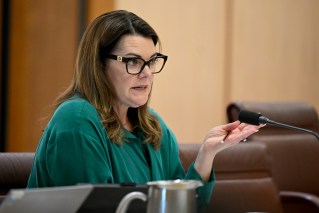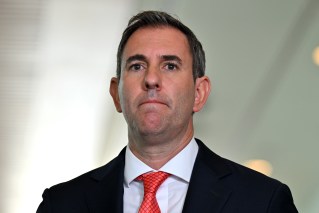Federal budget 2020: Treasurer gambles on a risky business-led recovery


The JobSeeker payment is to decrease at the end of March. Photo: TND/AAP
Treasurer Josh Frydenberg has rolled the dice on a business-led recovery in this year’s federal budget, but economists say it’s a gamble that’s unlikely to pay off.
After weeks of pre-budget policy announcements, there were very few surprises in the budget that the Treasurer handed down on Tuesday evening.
And the new policies that were announced failed to win the support of leading economists.
Angela Jackson, an economist at Equity Economics, said the budget had optimistically backed business to lead the recovery, but had failed to address how women had borne the brunt of the recession.
Ms Jackson told The New Daily it made sense to provide a generous asset write-off to encourage business owners to spend some of the excess money they had received under the JobKeeper wage subsidy program.
But she said the scheme – which allows businesses with turnover of up to $5 billion to instantly write off the full value of any eligible asset they buy for their business – was part of a suite of business tax breaks that would cost the budget $31.6 billion, but only deliver a $10 billion boost to the economy next financial year.
Tweet from @TheAusInstitute
“So it’s not a lot of bang for the buck when you consider they could have done child care, where they could invest $5 billion for an $11 billion return,” Ms Jackson told The New Daily, referring to Grattan Institute research.
“So it’s an expensive way of getting economic growth. And it’s also relying, effectively, on businesses to spend and to generate jobs and to invest over this next period.
“Now, they might do that. But if there’s a lot of uncertainty out there, they may not.”
The policy speaks to the Morrison government’s desire for the private sector to stand on its own two feet as soon as possible, rather than being propped up by unsustainable government support.
Ms Jackson agreed that should be the ultimate goal, but said demand in the economy was too weak to expect businesses to take the lead in the next stage of the recovery.
In an economy where businesses are shedding jobs and have little inclination to spend and invest, she said the government should have spent more money on direct job creation.
And Centre for Future Work senior economist Alison Pennington agreed – noting that the budget had failed to live up to comparisons with the policies that rebuilt the economy after the Second World War.
Tweet from @CntrFutureWork
Ms Pennington told The New Daily the budget was littered with “hollow” announcements and fell “woefully short of providing Australians with any hope of the mass job creation that they need”.
The $7.5 billion announced for infrastructure projects was in line with previous years’ spending and did not amount to an increase, she said.
And the apprenticeship subsidy would likely be undersubscribed, as there was not enough work for young apprentices to do.
“There hasn’t been an expansion in funding for a public housing build, that would have used apprentices long term, or an expansion in health care and education spending that was sizeable to put these people into jobs, so I actually think that [180,000] will be undersubscribed,” Ms Pennington told The New Daily.
“And I would say that almost follows suit for a lot of their jobs figures.”
Tweet from @CallamPickering
Marc Robinson, an Australian economist and author of the recently published book Bigger Government, also said the Morrison government had failed to do enough to support jobs.
But for different reasons.
He said the new wage and apprenticeship subsidies were good policies, but had been introduced too soon – noting that the government should have phased out JobKeeper more slowly than it had done, as the private sector was too weak to bounce back without it.
“I certainly would have maintained the JobSeeker Coronavirus Supplement significantly longer, because the biggest challenge is to maintain demand in the economy,” he said.
“The government has done a really good job of that to date through the Coronavirus Supplement, through the various other payments that have been handed out, but these are being phased down quite rapidly now.
“So the next six months are going to be really challenging for businesses – and I think that support needed to be maintained for longer.”
Dr Robinson, a veteran economist who worked for years at the International Monetary Fund, also said the new wage subsidy – which pays companies up to $200 a week to hire people aged 16 to 35 who are currently on JobSeeker – was designed in a way that would allow firms to hire workers for 12 months to claim the subsidy before letting them go.
Meanwhile, he said the instant asset write-off would do little to generate new jobs, as most businesses were unlikely to invest during this economic climate and those that did would buy equipment from overseas.
He described Mr Frydenberg’s “game changer” rhetoric as “gross political exaggeration”.
Tweet from @_warrenhogan
As for JobKeeper, its eventual removal in March will withdraw roughly $12 billion a month from the economy – dealing a massive blow to the spending power of Australians.
UTS industry professor Warren Hogan said there was a question mark over whether the new policies the government had announced in the budget – namely the new wage subsidy, generous business asset write-off, and apprenticeship subsidy – would be enough to support the recovery once the economy is removed.
But he said a private sector-led recovery was the right path to take and the government could increase spending in 2021 if the recovery run out of puff once JobKeeper was removed.








